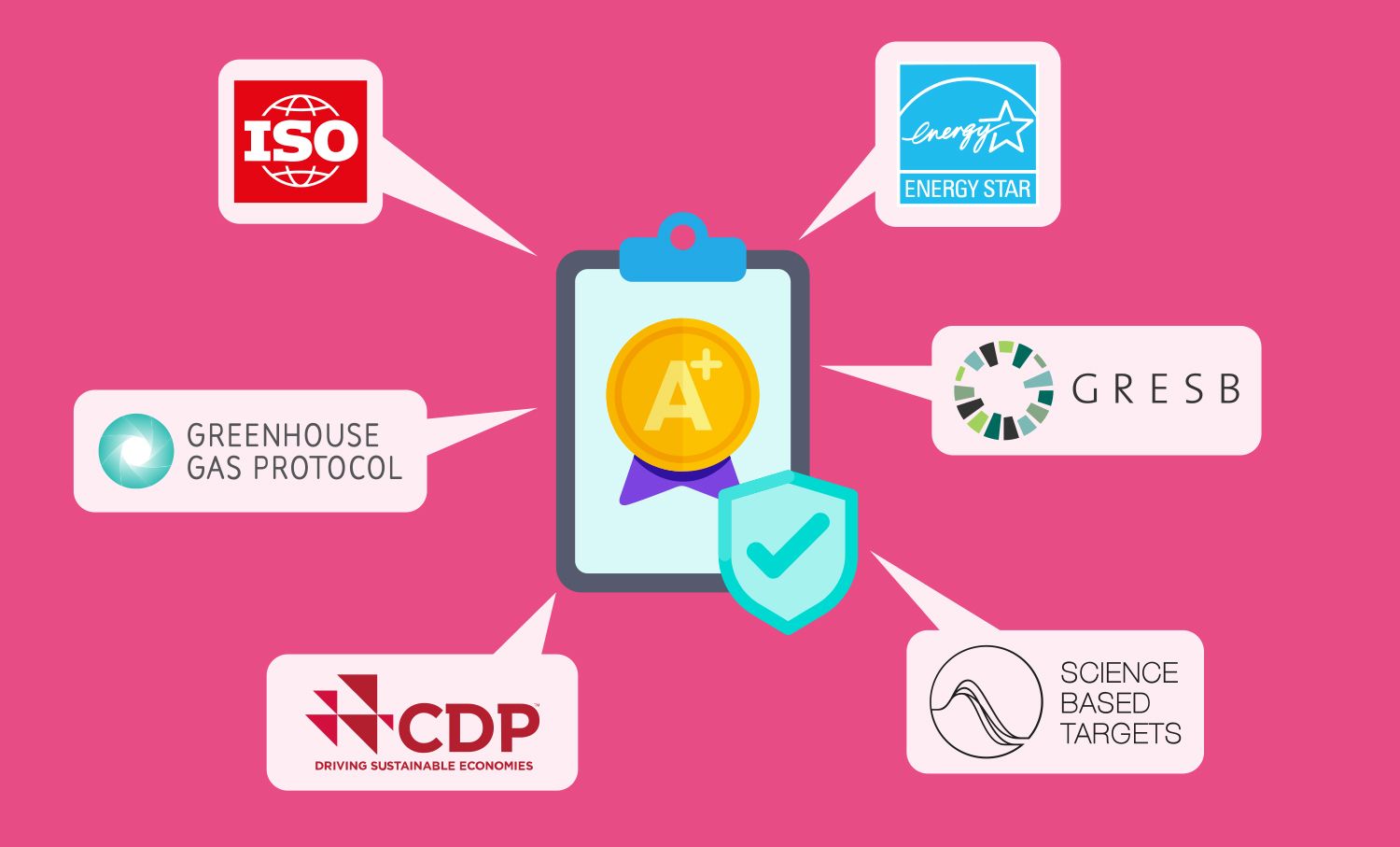Common Reporting and Compliance Frameworks in Energy & Sustainability
Common Reporting and Compliance Frameworks in Energy & Sustainability. From CDP to SBTi.

If you like acronyms, then sustainability reporting is the place for you.
Sustainability and energy efficiency are becoming increasingly important as companies aim to reduce their carbon footprint and address the growing concerns surrounding climate change. Energy and sustainability reporting are two critical components that can help companies to achieve their sustainability goals. In this article, we'll take a closer look at the importance of energy and sustainability reporting, and some of the frameworks that are helping companies to achieve their sustainability targets.
One benefit of energy and sustainability reporting is that it provides transparency to stakeholders, including investors, employees, and customers. By reporting on energy and sustainability performance, companies can demonstrate their commitment to sustainability, which can significantly enhance their reputation and attract potential investors and customers. This helps to hold everyone accountable for sustainability in the company.
What is GRESB?
GRESB (Global Real Estate Sustainability Benchmark) is one of the frameworks that companies use to report on their sustainability performance in the commercial real estate industry. GRESB is a global standard for sustainability benchmarking, and companies that score highly in the assessment are perceived as being more sustainable, and thus, more attractive to investors (in particlar around ESG).
GRESB is recognized by institutional investors, and in 2020, 1,229 companies and funds participated in the benchmark, representing $4.8 trillion in real estate assets. Participating in frameworks such as GRESB helps companies stand out among their competitors and be more attractive to investors seeking sustainability-focused companies and investments.
What is ISO 50001?
ISO 50001 is a standard for energy management systems; it helps companies identify areas where they can improve energy efficiency, lower energy costs, and reduce their carbon footprint. The standard includes requirements for establishing, implementing, maintaining, and improving energy management systems (EnMS). Adopting ISO 50001 and gaining certification can also demonstrate to stakeholders that a company is taking measurable and effective steps to reduce its environmental impact.
What is the GHG Protocol?
The GHG Protocol (Greenhouse Gas Protocol) is yet another important framework for sustainability reporting. The GHG Protocol is a set of guidelines developed by the World Resources Institute and the World Business Council for Sustainable Development, which helps companies to understand, quantify, and manage their greenhouse gas emissions. This framework provides clear guidance on how companies can measure, report, and reduce their carbon footprint. It is widely recognized as the global standard for GHG accounting and is used by companies around the world to report their sustainability performance.
What is SBTi (Science Based Targets Initiative)?
SBTi (Science Based Targets Initiative) is an initiative jointly launched by a number of international organizations to assist companies in formulating science-based sustainable development goals. Participation in SBTi helps companies demonstrate their commitment to sustainability and allows them to contribute to global emission reduction efforts. The SBTi relies on matching corporate goals with the science behind global carbon reductions, ensuring that corporate sustainability efforts have real environmental benefits.
What is CDP?
CDP (Carbon Disclosure Project) is an international non-profit organization that encourages companies to transparently disclose their information on climate change, water resources and forest management. By completing CDP's questionnaire, companies can report on their environmental impact, demonstrate their sustainability efforts and provide more detailed information to investors, customers and stakeholders. The goal of CDP is to encourage enterprises to disclose their environmental management and sustainability practices in a more responsible manner, thus facilitating the evaluation of enterprises by relevant parties, and also help to promote the process of global sustainable development.
What is ENERGY STAR?
ENERGY STAR, a program maintained by the US Environmental Protection Agency (EPA), aims to reduce energy consumption and carbon emissions by promoting energy efficiency. ENERGY STAR certified buildings meet stringent energy efficiency standards. In the Energy and Sustainability Report, businesses can report on their progress in using ENERGY STAR certified products and practices to reduce their carbon footprint. The ENERGY STAR program encourages companies to adopt more environmentally friendly energy and resource usage, thereby contributing to sustainable development, while also enhancing the company's environmental image.
The importance of tracking and reporting
Energy and sustainability reporting are crucial for companies pursuing sustainability goals. It helps companies to highlight their commitment to sustainability, be more transparent to stakeholders, and attract investors. Frameworks like GRESB, ISO 50001, and GHG Protocol are all valuable tools that companies can use to measure and report their sustainability performance. By adopting these frameworks and gaining certification, companies can demonstrate their commitment to sustainability, reduce their carbon footprint, and contribute towards a more sustainable future.
You can learn more about these different frameworks on EnergyElephant’s Reporting and Compliance page.
References